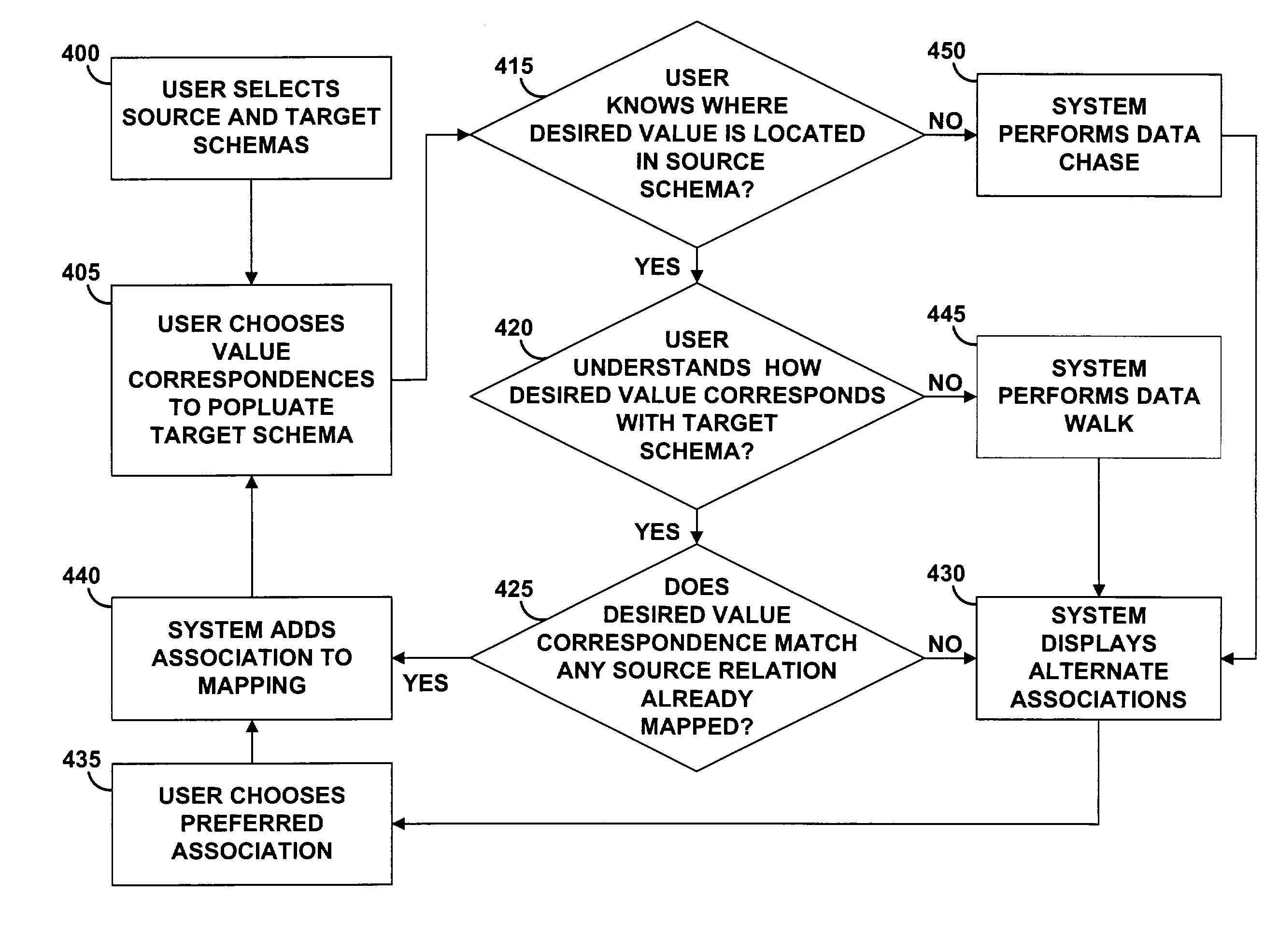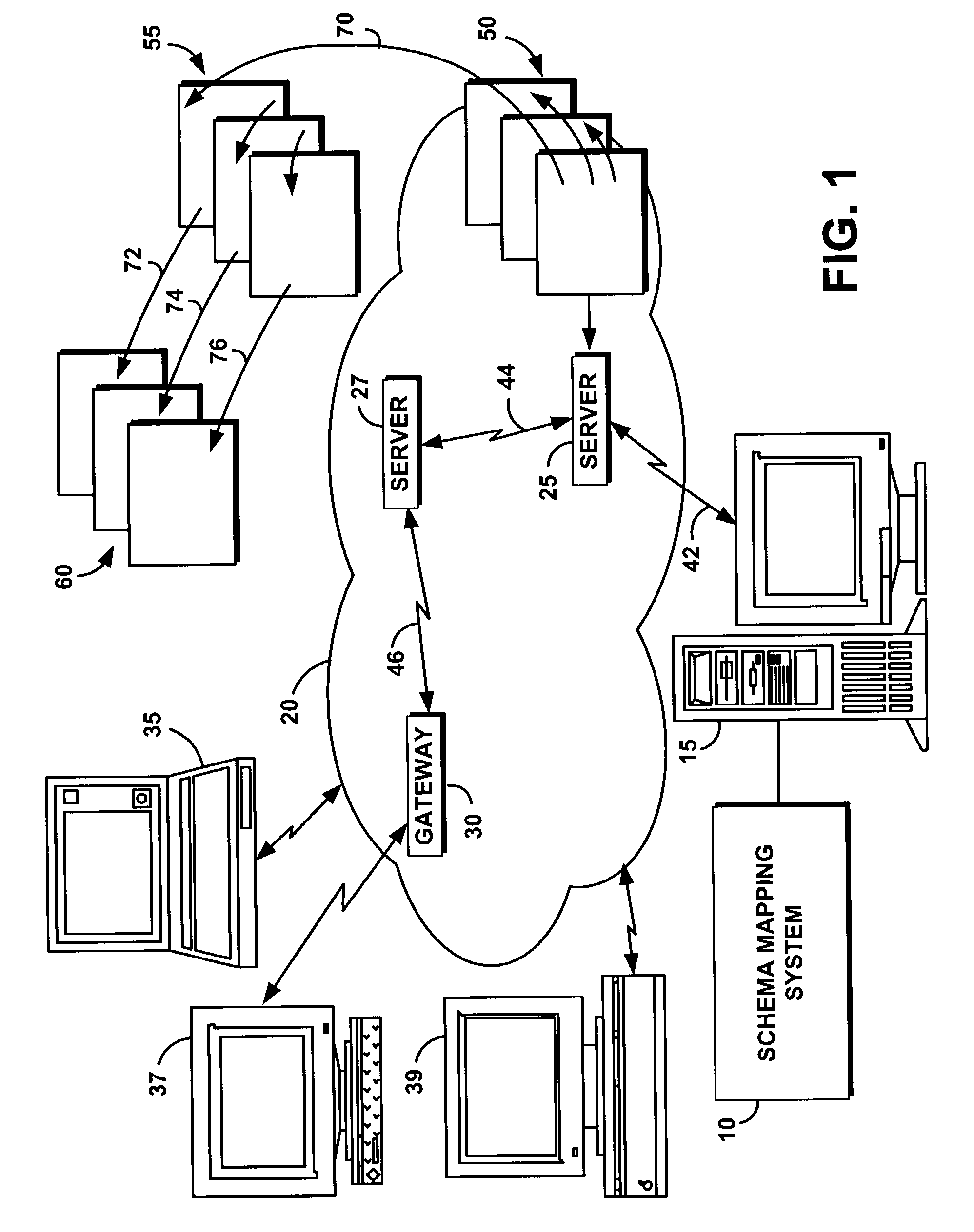Method for schema mapping and data transformation
a schema and data transformation technology, applied in the field of data processing, can solve the problems of large number of possible mappings, inability of users to understand and transform this data, and increasing volume of data available on the internet, and achieve reasonable mappings between a data source and a target schema
- Summary
- Abstract
- Description
- Claims
- Application Information
AI Technical Summary
Benefits of technology
Problems solved by technology
Method used
Image
Examples
Embodiment Construction
[0049]The following definitions and explanations provide background information pertaining to the technical field of the present invention, and are intended to facilitate the understanding of the present invention without limiting its scope:
[0050]GUI: Graphical User Interface, a program interface that takes advantage of the computer's graphics capabilities to make the program easier to use.
[0051]Join: In relational databases, a join operation matches records in two tables. The two tables must be joined by at least one common field, i.e. the join field is a member of both tables. Typically, a join operation is part of a SQL query
[0052]Inner Join: the default join, producing a resulting record if a matching condition evaluates to true.
[0053]Outer Join: creates the same record whether or not the matching condition is met.
[0054]Internet: A collection of interconnected public and private computer networks that are linked together with routers by a set of standard protocols to form a glob...
PUM
 Login to View More
Login to View More Abstract
Description
Claims
Application Information
 Login to View More
Login to View More - R&D
- Intellectual Property
- Life Sciences
- Materials
- Tech Scout
- Unparalleled Data Quality
- Higher Quality Content
- 60% Fewer Hallucinations
Browse by: Latest US Patents, China's latest patents, Technical Efficacy Thesaurus, Application Domain, Technology Topic, Popular Technical Reports.
© 2025 PatSnap. All rights reserved.Legal|Privacy policy|Modern Slavery Act Transparency Statement|Sitemap|About US| Contact US: help@patsnap.com



